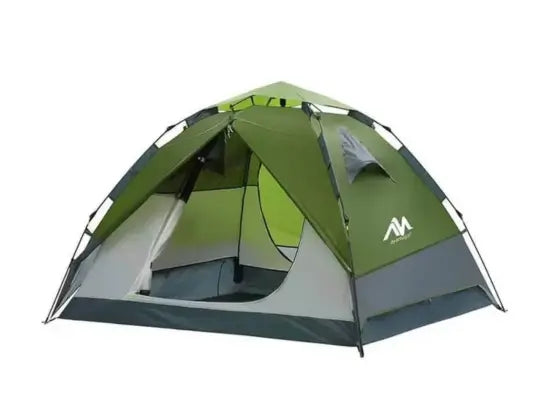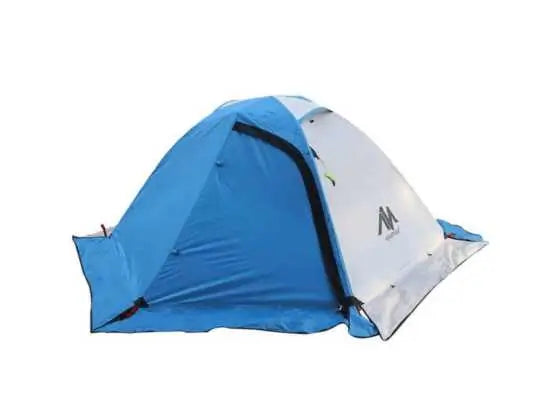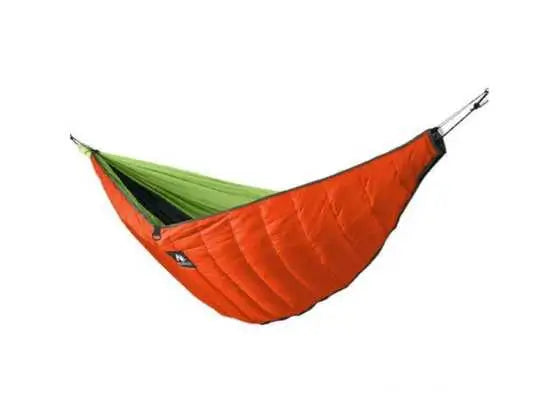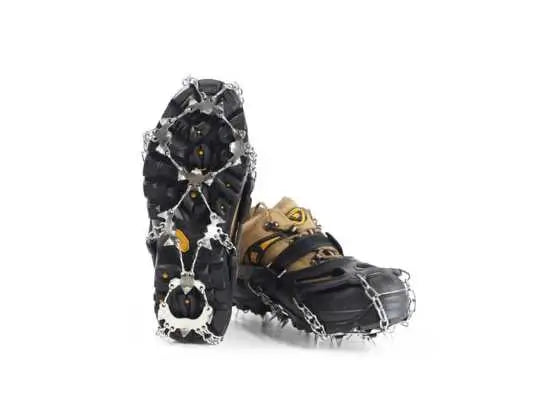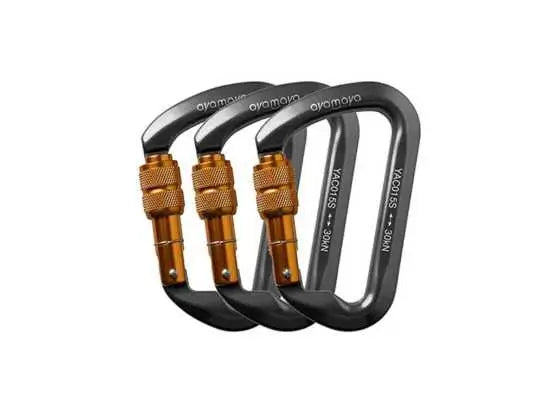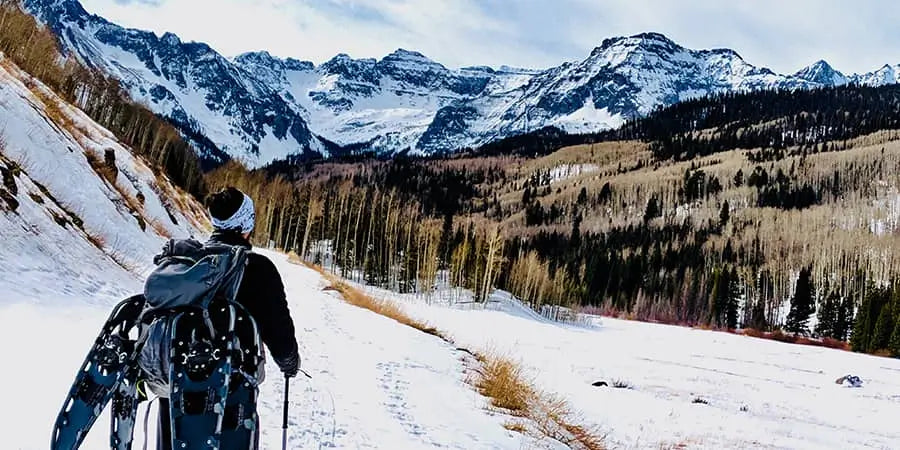Introduction
What began as a necessary form of winter transit thousands of years ago has developed into a popular recreational activity. But, if you've never tried snowshoeing before, you might wonder why. Here are some of the reasons:
- It's an excellent winter workout: Snowshoeing is a great low-impact cardio activity if you want to keep in shape even when the snowfalls. It allows you to extend your hiking and running season and enjoy quiet in regions that would otherwise be packed in the summer.
- It's an excellent social activity because people of all ages and abilities may participate.
- It is low-cost: If the cost of equipment and lift tickets for skiing and snowboarding makes you nervous, you'll be relieved to learn that snowshoeing is reasonably priced. Snowshoes and adequate clothing are needed equipment; poles are recommended but not required.
- It merely necessitates a few fundamental techniques: Few outdoor hobbies are as user-friendly as this one. If you want to venture off the beaten path, you'll need to learn how to climb and descend hills, traverse slopes, use poles, get up after falling in heavy snow, and use a snowshoe.
Snowshoes have a history. We all want to enjoy the fun, and many people are now exploring the snowy regions. It may not have been easy to explore the snow with bare legs or regular shoes, so the snowshoes were invented. Snowshoes, which were vast and unwieldy at the time, were utilized for transportation. Snowshoes today are lighter in weight and made of modern materials such as aluminium, nylon, polyethene, and other specialist plastics, all of which provide better performance. Of course, the field is still evolving, and we expect new developments shortly! Now that we can all get the snowshoes, it becomes vital to learn the tips for easy snowshoeing. Snowshoeing has become one of the most popular winter activities, attracting many customers searching for a low-cost method to enjoy winter while being active outside.

HOW DO I SELECT THE BEST SNOWSHOES?
You will have myriads of snowshoes to choose from, and you may have a challenge even to get the best because the choices will be pretty confusing. The decision process is daunting, and the problem is deciding which model fits your lifestyle and intended use among the many variations and designs of snowshoes available today.Snowshoes are often sold for one of three purposes:
- Recreation
- Backcountry
- Aerobic or running
Let's briefly discuss each of the three purposes for purchasing the snowshoes.
RECREATIONAL SNOWSHOES
Various kinds of recreational snowshoes are now available on multiple manufacturers' sites. This category is suited for multiple terrains, groomed or broken trails, and light exercise and appeals to the most incredible range of users. Lightweight aluminium frames, easy-to-adjust bindings, and good traction characterize these symmetrically shaped skis. We all have varying activities to do for recreational purposes. Whether you do it for a hike, golf course or just for your good, you should be sure that you have the correct snowshoes. Beginners, walkers, and hikers who spend most of their time on trails, parks, and golf courses will love these snowshoes.
BACKCOUNTRY SNOWSHOES
You will be doing well for the snow showers in it the backcountry if you check for the snowshoes customized for the frontier. These are meant for long-distance, off-trail use in deep snow and appeal to a more hard-core enthusiast. You will need robust backcountry shoes for increased traction, including broader aluminium frames, a more robust binding system, and heavier crampons. Winter campers, ice anglers, and climbers will love these snowshoes. You deserve the fun. A perfect pair of backcountry snowshoes will do it well for you.
RUNNING / AEROBIC SNOWSHOES
Maybe you want to try aerobic exercise in the snow, which won't be easy! It takes lots of energy to complete a kilometre in snow. That is why you need something that will support the whole process. It would be best if you had aerobic snowshoes. This category is for runners and joggers looking for a winter training activity and competitive athletes interested in competing in organized snowshoe races, which are becoming increasingly popular. These snowshoes are designed for use on groomed or packed trails and are shorter and lighter.
HOW TO PURCHASE THE CORRECT SIZE
Now that you can differentiate between different kinds of snowshoes, it is prudent to learn the tips on how to choose the right size that will bring convenience and comfort during your expedition. You must consider your body weight and the sort of terrain or snow you will be travelling on when selecting the appropriate snowshoe size. First, bodyweight is the most vital consideration because each snowshoe is designed for a specific weight. Select a snowshoe that can support up to one pound of body weight per square inch of surface area as a general rule. If you weigh 160 pounds, consider a pair with a minimum surface area of 160 square inches per snowshoe. If you're making your trail or walking in heavy snow, a diminutive larger size is recommended for improved buoyancy. The goal here is to be comfortable, so be sure you are getting the right snowshoe that will make your snowshoeing experiences unforgettable.
HOW TO DRESS FOR SNOWSHOEING
Because you are confident that you will be staying in the snowy area, you need to learn the most effective technique to keep warm and dry. This allows you to adjust to changing conditions or body temperature by adding or removing layers. Of course, this should not find you as a surprise because you knew it even before you set off for the snowshoeing. Snowshoeing is a very aerobic activity for most people, and sweat will play a more prominent role than you might imagine. As a result, moisture management is critical to stay warm and comfortable. A three-layer system with wool or synthetic base layer, a lightweight fleece middle layer, and a windproof but breathable outer shell. You can also look for jackets and pants with articulated shapes or stretch panels to provide additional mobility. When participating in high-intensity outdoor activities in the winter, layering lightweight clothing is recommended.
WHAT TYPE OF FOOTWEAR IS BEST FOR SNOWSHOEING?
Snowshoe bindings can accommodate a variety of footwear, from light hiking boots to hefty insulated boots. The action will determine the best footwear for a particular activity, such as walking or jogging, versus camping or climbing. We recommend a pair of waterproof hiking boots that are solid and comfortable for regular recreational trekking. A couple of waterproof gaiters can be connected to your lower leg around the top of your shoes for increased protection and warmth if you're going into deep snow.
DO I NEED POLES?
Yes, it would be best if you had the poles while snowshoeing. Trekking poles are your best friend when you are snowshoeing. A dedicated snowshoe or trekking pole is highly recommended for most snowshoe adventures. They help you maintain your balance and provide additional stability when walking on uneven ground. A lightweight pole with a three-section shaft that may be adjusted in length is recommended. Most decent poles come with various baskets that may be swapped out depending on the snow conditions. The best trekking poles include an anti-shock mechanism incorporated into the shaft, making them excellent for summer hiking or hard-surface workout walking.
CARE FOR SNOWSHOES
Once you have purchased your snowshoes, you will then think about maintenance. With their aluminium frames and synthetic decks, modern snowshoes require extremely minimal upkeep. To keep their sharp crampons from hurting other items, it's best to dry them off after each use and store them in a safe storage bag. The greatest snowshoe makers provide a custom-built storage bag with shoulder straps made of thick nylon.
Summary
In summary, snowshoeing is such an excellent recreational activity, and you need to have the tips at your fingertips because you never know when you will need to use them. Whether you need to stay warm, stay safe or remain comfortable, it is necessary to have the tips to be an expert in the field.

